Tender Slow Cooker Mississippi Ribeye Steaks Recipe for Dinner
Slow cookers have magical ways of turning tough mississippi ribeye steaks into melt-in-your-mouth deliciousness.
Tender meat practically falls apart with minimal effort.
Robust flavors develop slowly, creating a deeply satisfying meal that feels like pure comfort.
Southern-style cooking meets modern convenience in this simple yet impressive dish.
Rich marinades and low temperatures work together to break down muscle fibers.
Spices and seasonings penetrate every inch of the meat, promising an unforgettable dining experience.
Slow Cooker Mississippi Ribeye Steaks Made Easy
Ingredients for Slow Cooker Mississippi Ribeye
For the Meat:For the Seasonings:For the Liquid and Additional Flavors:For the Cooking Base:How to Cook Mississippi Ribeye Steaks
Step 1: Sizzle and Brown Steaks
Heat olive oil in a large skillet over medium-high heat. Gently place ribeye steaks in the pan and cook for 2-3 minutes on each side until a beautiful golden crust forms.
Step 2: Prepare Slow Cooker Base
Pour beef broth into the slow cooker, creating a flavorful liquid foundation for the steaks.
Step 3: Transfer Seared Steaks
Carefully move the golden-brown steaks from the skillet into the slow cooker, nestling them into the broth.
Step 4: Create Flavor Explosion
Generously sprinkle over the top of the steaks:Ensure an even coating to maximize taste potential.
Step 5: Add Tangy Peppers
Toss in pepperoncini peppers and a splash of their zesty juice.
These peppers will infuse the meat with a bright, tangy kick.
Step 6: Slow Cook to Perfection
Cover the slow cooker and let the magic happen.
Choose your cooking method:The steaks will become incredibly tender and juicy.
Step 7: Plate and Enjoy
Carefully remove the steaks from the slow cooker.
Serve immediately with your favorite side dishes, spooning extra juice over the top for maximum flavor.
Tips for Tender Mississippi Ribeye Steaks
Variations on Mississippi Ribeye Steaks
Pairings to Enjoy with Mississippi Ribeye Steaks
Proper Storage for Mississippi Ribeye Steaks
FAQs
Yes, you can substitute ribeye with chuck roast or sirloin steak. These cuts also work well in slow cookers and become tender with long cooking.
No, leave some fat on the steaks. The fat helps keep the meat moist and adds flavor during the slow cooking process.
Yes, searing creates a delicious golden-brown crust and helps lock in the meat’s natural juices, enhancing the overall flavor of the dish.
You can use banana peppers or mild pickled jalapeños as alternatives. These will still provide a tangy flavor to the Mississippi-style steaks.
Print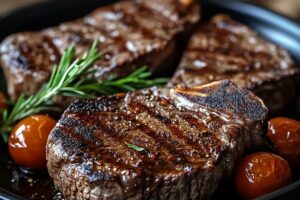
Slow Cooker Mississippi Ribeye Steaks Recipe
- Total Time: 8 hours 15 minutes
- Yield: 2 1x
Description
Mississippi Ribeye Steaks deliver mouthwatering Southern comfort straight from your slow cooker. Juicy beef layered with ranch and pepperoncini creates a rich, tangy masterpiece you’ll crave again and again.
Ingredients
Main Proteins:
- 2 ribeye steaks
Seasonings:
- 1 packet ranch dressing seasoning mix
- 1 packet au jus seasoning mix
Liquid and Supporting Ingredients:
- 1/2 cup (120 milliliters) unsalted beef broth
- 1/2 cup (120 milliliters) pepperoncini peppers (including some juice)
- 1 tablespoon (15 milliliters) olive oil
- Freshly ground black pepper to taste
Instructions
- Prepare a large skillet by heating olive oil over medium-high temperature until shimmering and hot.
- Rapidly sear ribeye steaks for 2-3 minutes per side, creating a rich golden-brown exterior that locks in moisture and develops deep flavor profiles.
- Transfer seared steaks directly into the slow cooker basin, positioning them carefully to ensure even cooking.
- Generously distribute ranch dressing mix and au jus seasoning across the surface of each steak, ensuring complete and uniform coverage.
- Scatter tangy pepperoncini peppers around and between the steaks, including a splash of their zesty juice to enhance overall taste complexity.
- Gently pour beef broth into the slow cooker, creating a moisture-rich environment that will tenderize the meat during cooking.
- Secure the slow cooker lid and set to low temperature for 6-8 hours or high temperature for 3-4 hours, allowing the meat to become supremely tender and infused with robust seasonings.
- Once cooking cycle completes, carefully remove steaks and arrange on serving plates, spooning additional pepperoncini and cooking liquid over the top for maximum flavor intensity.
Notes
- Always choose thick-cut ribeye steaks for maximum tenderness and rich flavor during slow cooking.
- Searing steaks before slow cooking creates a delicious golden crust that locks in juices and enhances overall taste profile.
- Adjust cooking time based on steak thickness; thinner cuts might become dry if cooked for full recommended duration.
- For a healthier version, replace beef broth with low-sodium alternatives and use lean cuts of ribeye to reduce fat content.
- Prep Time: 15 minutes
- Cook Time: 8 hours (on Low) or 4 hours (on High)
- Category: Dinner
- Method: Slow Cooking
- Cuisine: American
Nutrition
- Serving Size: 2
- Calories: 670 kcal
- Sugar: 2 g
- Sodium: 900 mg
- Fat: 52 g
- Saturated Fat: 18 g
- Unsaturated Fat: 30 g
- Trans Fat: 1.5 g
- Carbohydrates: 4 g
- Fiber: 1 g
- Protein: 45 g
- Cholesterol: 130 mg

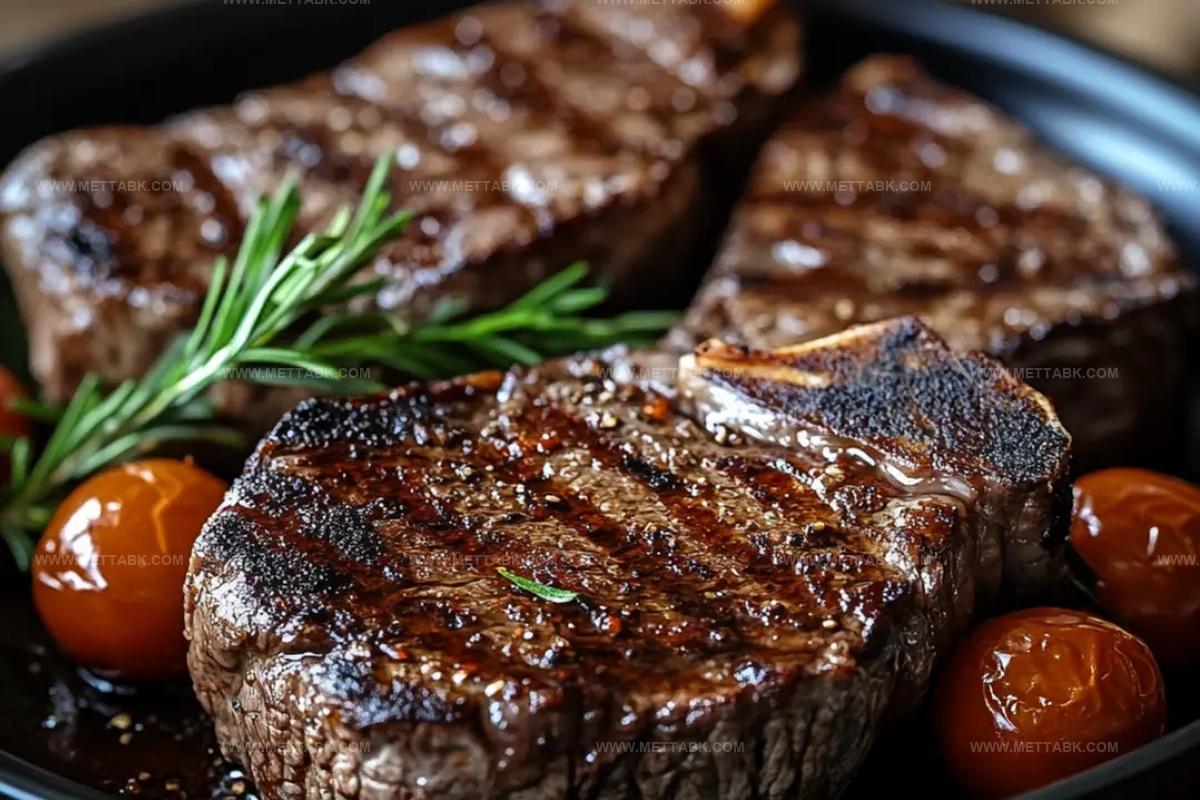
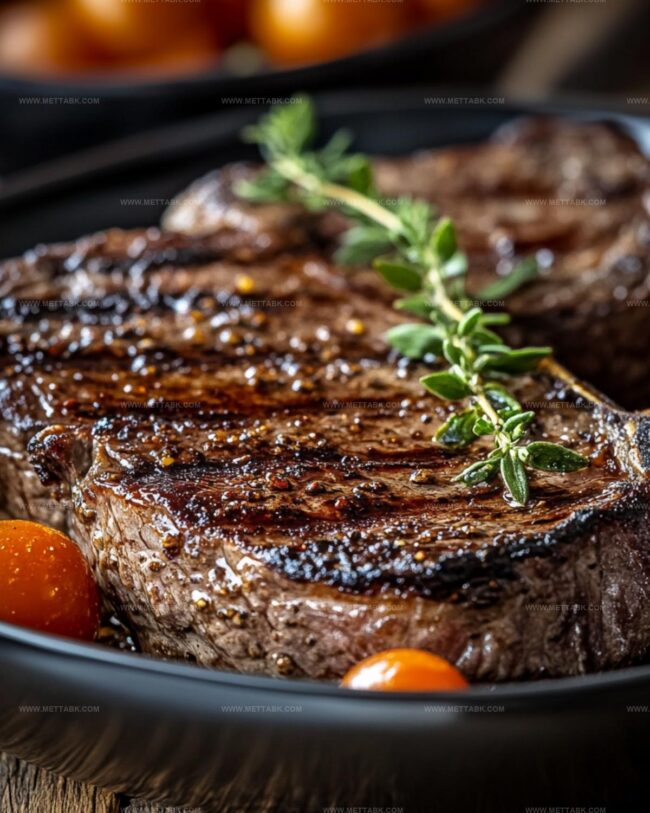
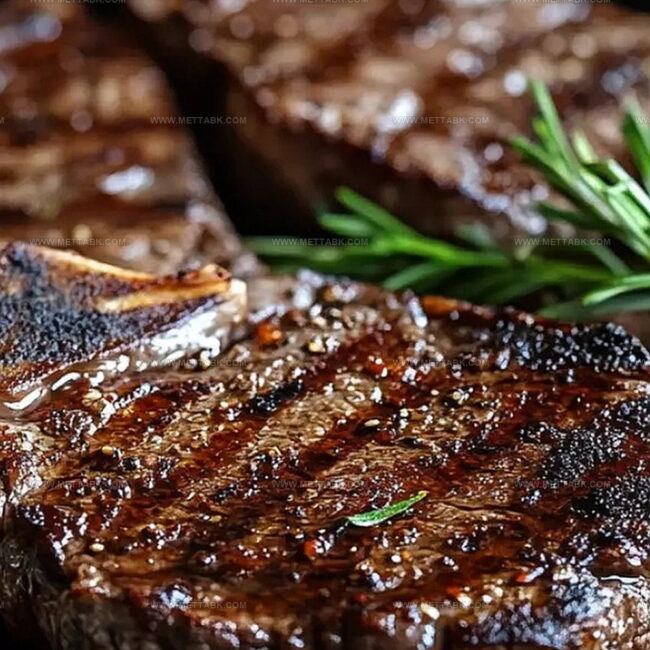
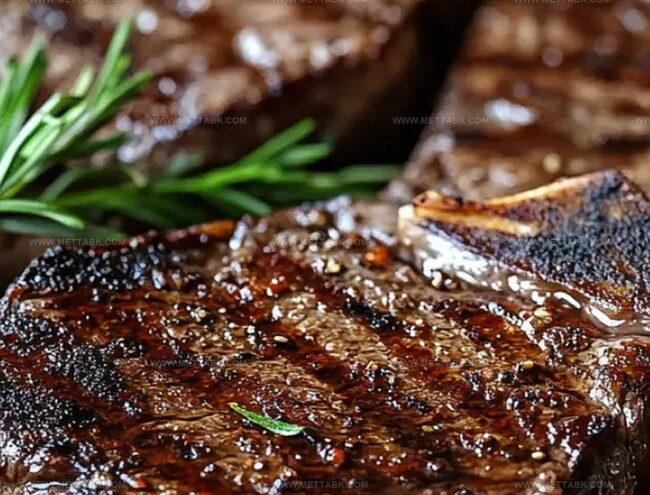
Nate Harper
Founder & Recipe Curator
Expertise
Single-Recipe Development, Farm-to-Table Cooking, Seasonal Menu Planning, Culinary Storytelling, Home Kitchen Innovation
Education
Cascade Culinary Institute – Central Oregon Community College
Certificate in Culinary Arts
Focus: Farm-to-table cuisine, sustainable cooking practices, and seasonal recipe creation.
Nate studied under experienced chefs who emphasized local sourcing, minimal waste, and building recipes from fresh, simple ingredients.
Nate Harper is the founder and creative force behind Make, Take, Bake. Raised in the wild beauty of Oregon’s high desert, Nate grew up surrounded by family gardens, farmers’ markets, and home kitchens that celebrated the seasons.
His early love for simple, honest food evolved into a professional passion when he attended Cascade Culinary Institute, where he sharpened his skills in creating recipes that are sustainable, satisfying, and made for everyday life.
Nate’s goal is to make cooking feel accessible, free of fuss, and full of flavor. He believes a single, thoughtfully built dish can stand alone, and sometimes even steal the show.